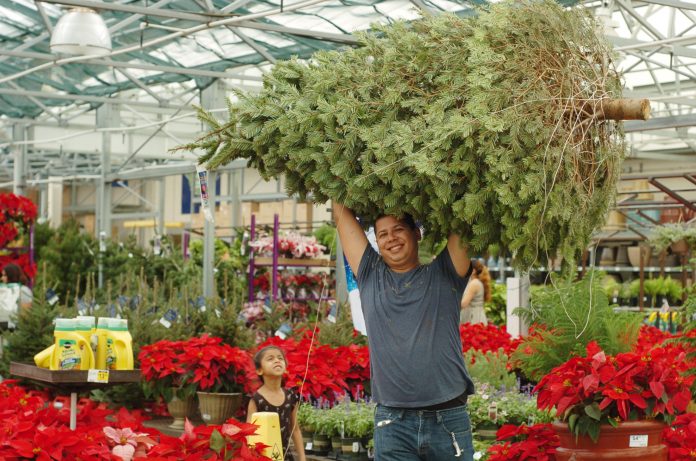
The severe drought this year across nearly the entire state handed out no gifts to Texas Christmas tree growers.
The bad news is some of them lost up to 20% of their small seedlings. The good? There should be no shortage of bigger trees when they go on sale right after Thanksgiving.
It’s a break for customers, and for Texas growers, who have cultivated an annual $250 million industry from the holiday staple.
“The trees that got affected by the drought were seedlings. Most of the big trees are still good and as far as I know everybody’s pretty much ready for that Friday after Thanksgiving,” said Stan Reed, executive secretary of the Texas Christmas Tree Growers Association.
The closest “choose-and-cut” tree farm to the Rio Grande Valley is Devine Acres Farm south of San Antonio in Devine. Operated by Ken and Debi Capps, Debi says the drought was not the problem per se.
“We drip irrigate so we are able to water regardless of the drought; however, the extreme heat this last summer was really rough on our trees regardless of how much we irrigated,” Debi said via email.
The Texas Christmas tree business involves driving to the farm and buying fresh, called “choose-and-cut.” It will take a bit of a road trip to get to one from here in the Valley, with Devine Acres Farm the closest at 250 miles away.
Still, a holiday tradition is a holiday tradition.
“We do have customers from the Valley,” Debi said.

Reed said the absence of tree farms in South Texas probably is not due to climate, but most likely a case of the soil not having the proper pH.
“I don’t think there are too many farms down that way because I don’t know if they can grow there,” he said. “The Christmas trees that we grow in the state are native to the state or imported ones that grow in the same type of soil.”
Texas-grown Christmas trees are almost always one of the following: Virginia pine, Afghan pine, Leyland cypress or Arizona Blue Ice cypress.
“Normally, if it’s Virginia pine or an Afghan pine, or a Leyland cypress or an Arizona Blue Ice, then it’s a Texas tree,” Reed said. “If it’s any type of a fir it’s going to be from North Carolina, South Carolina, Michigan, Wisconsin, Oregon, Washington.”
Those tree varieties are the ones we normally see for sale here in the Valley at the roadside stands.
“What I always say is, that if you’re going to get a live tree for a Christmas tree, buy it early because if you wait too long most of our people sell out in the first two weeks,” Reed said. “We have one farm in particular where that first week of Thanksgiving they usually sell out, they do $250,000 that week on the Friday, Saturday and Sunday after Thanksgiving.”
Reed said the “choose-and-cut” farms are now busy selecting and counting trees appropriately sized for this holiday season.
They also are planning for next year by replacing the seedlings lost to drought, and many will double-plant in January to make up the losses.
“We normally sell close to 120,000 seedlings a year,” Reed said. “This year we’re selling 150,000. A lot of people are ordering extra.”



